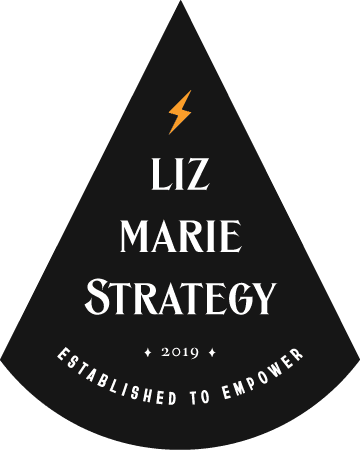Did you know that only 40% of all small businesses even make a profit? Are you kidding me? Yeah, it sucks, and I’ve been there.
Maybe you’ve tried raising your prices and it didn’t go over well, or you don’t feel confident doing so, or don’t know how to go about it. It’s a huge challenge no matter what. But if you’re trying to become a profitable business (as we all are), raising your prices is one way to get there.
Let’s talk through how to raise your prices with confidence including:
(Jump ahead)
Price vs. Value
Price is what you pay. Value is what you get. When what you’re delivering exceeds what they expect to pay, you’re more valuable. They’re happy, they’re more likely to come back, and more likely to pay a higher price. You justify a higher price point by delivering a lot of value and effectively communicating that value.
Say you bought a $100 camera that captures all your memories. That’s worth so much more than the $100 you spent – it may even be priceless. This is the type of experience you want to deliver to your customers and clients. That way, whatever they’re paying for, you’re providing value above and beyond what they expected, so there’s no question in their mind that they got their money’s worth. Plus, you can eventually raise your prices. You’ll need to communicate that value so that they anticipate that it will be worth it before they even buy it.
A good way to think about it is a commodity vs. a name brand. People are willing to spend so much more on the name brand over the generic. Why? Because the name brand stands out. They’ve built trust, a reputation, they’re recognizable, and that’s exactly what you want to do with your brand. You want to stand out and communicate immediately that this is worth the money. Your name brand is worth more than the commodity; it’s worth more than the other options.

3 Reasons You Don’t Feel Confident Raising Your Prices
1. You’re not doing a good enough job communicating the value you provide.
Sure, you may have this amazing product or service. It does everything your customer would have dreamed of – but they don’t know that. Maybe you don’t have a clear value proposition, or you’re not communicating the transformation. Whatever it is, it isn’t clear. People look at the price you’re asking for, and they don’t get it.
If you’re not clearly communicating your product/service/brand’s value, you can’t justify the price you’re asking. It’s not worth it to your customers, and they’re going to go somewhere else.
2. You’re talking to the wrong customer.
If you’re trying to sell a premium product/service yet talking to the bottom-of-the-barrel customer, you’re not going to feel confident raising your prices because you’ve only received feedback from the wrong people. I see this problem all the time. Your message might be right, maybe you’re doing a great job communicating your value, but you’re talking to the wrong customer.
Until you get super clear on who the right audience is and how to reach them, there’s going to be a problem.
3. There’s a disconnect between what you’re putting out and what people expect to pay.
They see your product/service, website, marketing, and it communicates to them that this will be about $ price point. They think you’re going to be in the middle of the road, but then they see you’re asking for $$$ price point. You look like a cheaper product/service, but you’re asking for premium prices. Or you could look like an expensive product/service, but you’re asking for a super low price. People don’t trust that.
There needs to be alignment between your brand, your message, what you’re communicating, the actual product/service itself, your customer, and your price. If there’s a disconnect along the way, you’re going to throw everybody off. They’re not going to buy this higher price you’re asking for, and you won’t feel confident that you’re worth it.
What’s the solution?

Solution 1: Better Communicate The Value You Offer
What do you do that is worthwhile to your customer? You need to communicate that better.
That’s where branding comes in. If you’re not crystal clear on your value proposition, the core message of your brand, and how it connects to the right customer – you need to go back to the drawing board. You won’t feel confident selling at all, let alone raising your prices if you’re not clear on this.
Here are a few tips for better communicating the value that you provide:
Focus on the benefits – not just the features.
Say you have a product that does xyz, well, so does your competitor. What does that get me? How will this help me? What do I get at the end of this besides just another thing?
Sell the transformation.
People LOVE a before and after. You want to speak to someone’s pain points. “If you’re here – we’ll get you over there.” Sell the transformation that you’re offering.
How much would you pay for a lipstick? How about a lipstick that is moisturizing, long-lasting, and has great pigmentation? Now, how much would you pay for a lipstick that makes you feel the most beautiful you’ve ever felt? That’s a much better story – and much easier to sell people on – because it pulls at their emotions. You’re selling the transformation and benefits rather than just a product.
Sell the lifestyle.
Another way is to sell a lifestyle by going the aspirational route. One of my favorite brands is the luggage brand Away. Luggage brands are pretty straightforward: you buy a bag, and you travel with it. Instead of focusing on their bag features (which are actually pretty superior), Away sells a jetsetter, adventurer lifestyle. Their content and marketing are about an aspirational lifestyle. They focus their brand on selling the dream, not just the features, which communicates way more value and resonates so much more than “look at the pockets on this bag.”
Understand your audience better.
You can charge a premium for understanding your audience better than anyone else. Get super targeted and focus on a particular niche. You want your customer to look at you and think, “they get me.”
People are far more willing to pay for a brand that feels like it knows them – and they’ll pay a premium for it. You can only do that if you get super specific about who your audience is. Once you understand them as you possibly can, and communicate that in your messaging/branding, you’re golden!

Solution 2: Add More Value to Your Brand
We’ve talked about how to communicate the value that you’re already adding, but how about adding a little more? These are a few of my favorite ways to up the ante of your product/service (or check out this article for 70 more ways to add value!!)
Better branding
People pay more for something pretty, simple as that. Design is a differentiator. Branding makes you stand out and adds perceived value for your customer. The nicer your branding, the more sense a higher price point makes.
Enhance your customer experience
Customer experience is everything that happens from the moment your customer finds you, to buying your product/service, to receiving it. It’s the whole journey they go through with your offering. How do you enhance that and make it feel really special and thoughtful? If you sell a product, do you include special packaging? If you’re a service provider, do you give a gift or are you intentional about every touchpoint?
Say your brand is all about making your customers’ lives easier. As such, you’re supportive and hands-on, giving them everything they need to have a great experience. If your service is taking something off your customer’s plate, you focus on a super hands-off experience. Whatever business you’re in, think about how you can make the experience that much more valuable. How can you make your customer’s life better, easier, and overall improve everything they’re going through when using your product or service.
If you do that and sell them on it, you then communicate what you’re doing for them. Say, “this is how our product/service works, this is what we’re doing for you, this is why it’s unique – this is why it’s worth this much money.” People will pay!
Create exclusivity or a sense of urgency
This is more of a tactic than a long-term strategy. I’m sure you’ve seen this: there are only x spots left, or we’re only creating 10 of these limited edition products. It works! If you have an in-demand product and there’s a limited quantity or a limited number of spots at an event – people are going to be willing to pay more for it. It’s a tried and true model.
Offer a guarantee
If you’re really having trouble getting people to see the value and you’ve done all these other things, try offering a guarantee. Like a money-back guarantee or a warranty – whatever it is that applies to your product/service to make them feel that much more confident that it’s worth making the investment.

How to Raise Your Prices – 3 Techniques to Try
Alright, so you’ve done all of that… but you still don’t know how to set your pieces.
Price is the elephant in the room. An old boss once told me the hardest thing he ever did as a business owner was figure out how to price. That always stuck with me.
We tend to price ourselves too low; we second-guess what people are willing to pay. There are so many techniques out there on how to raise your prices. I’ve tried several, and there are good and bad to each. Let’s go over a few of the techniques I’ve used, how they work, and their pros and cons.
Before You Start: Customer Research
It’s essential to start with customer research. You need to figure out how much your customer is willing to pay. Keep in mind: consumers don’t know what they want most of the time. They don’t know what they would pay for something until it’s all bright and right in front of them. So, it’s good to set a baseline with this. You need to talk to your customers about everything, but always take it with a grain of salt.
Method 1: Calculate Your Costs + Mark It Up for Profit
Probably the most straightforward technique is to price yourself based on the cost of goods or services + labor and mark it up.
This will be slightly different if you have a product vs. service and depending on your business and how you operate. But here’s the basic premise:
Price = (Labor + Materials) x Profit Markup + Overhead
Take all of your expenses that go into operating your business – let’s say that’s $1,000/month – and mark it up for profit. 15-20% is generally considered a good profit margin across businesses. So, if you have $1,000 in expenses, you’d mark it up to $1,200. Keep in mind that you need to average that out over the number of units sold. If it costs $1,000 to create a hundred units, that’s $10 each, and you would mark those up 20%. Make sense?
The idea is that you have profit built-in. The challenge is that you don’t always know what something’s going to cost. Sure, you have variable costs on the product side, especially as you scale, time and labor, etc., but it’s not exact. For me, on the service side, the hardest part was figuring out how much time something was going to take. I would have to guess, and I was wrong a lot. To me, that’s the big downside. You very easily eat into your profit.
Method 2: Analyze the Market
Research your competitors and figure out what’s the low end to high end of this product/service, then decide where you want to fall. Maybe you want to be in the premium range. Maybe you want to be the cheap one, and you can undercut the others. They’re both viable strategies as long as you know what that landscape is. Once you get a sense of this, you can find your spot and pick what feels right based on that and the other factors.
Say that you want to be right in the middle, but you’re not making a profit – that’s not a reasonable price for you. You have to find how all these methods intersect best for you.
Method 3: Reverse Engineer Your Lifestyle
The last method I’ve used is based on an amazing book called Sweet Spot Pricing. The basic premise of this model is to reverse-engineer your desired lifestyle.
In this model, you map out different versions of what you want your life to be like–from surviving to living good to living the dream–and map out the cost of each. You want to include a complete lifestyle, not just a house or a car, but have things like how many trips you want to take or how much time you want off a year. Whatever your dream is – you price it out. Then, reverse engineer that number.
Say your dream is to make $100,000 a year. You figure out if you can offer this many products or this is how much you sell, and this is how many services you can provide in that amount of time, how much do you have to price it to reach $100,000?
There are unknowns here, too, because how much you sell isn’t necessarily predictable. But it’s a good starting point to see if you’re reasonably working towards the lifestyle you want.

How I Raised My Prices
I started my business with a whole different pricing scheme and quickly learned who my ideal customers were. I didn’t want to price out the growing small businesses I dreamed of supporting, but I was tired of low-paying clients who weren’t a good fit for me. I had to make some changes!
The fix? I got more targeted with my audience, rebranded my company and transformed my client experience to add way more value. Instead of hourly rates and one-off proposals, I created packages specifically for my dream client and where they’re at in their business journey.
I started with tons of customer research and then used each of these methods. I ended up with three different numbers, and I found the intersection of what felt right. Then, I validated it. I put those numbers on my website, I pitched them on projects, and they’ve been supported again and again by customers. You always want to test and fine tune – your prices aren’t set in stone. You can always get feedback and adjust as needed.
That’s how I raised my prices. Hopefully, it will help you raise yours, too!

Remember, it starts with communicating the value you’re providing and adding enough value so that your dream customers will look at your product/service and feel it’s worth it. Once you’ve got that down, you can use these techniques to set your pricing.
The last step is then just doing what feels right to you.
Need help? Grab my free pricing calculator!
Get a jumpstart on raising your prices with my Google worksheet that will help you try out all three methods and compare the results.
